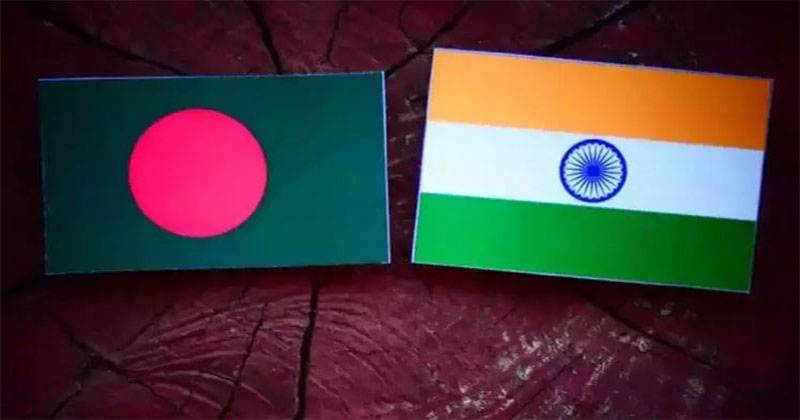In order to ease pressure on dollar holdings, India and Bangladesh have agreed to settle a part of bilateral trade in their home currencies Rupee and Taka respectively, Bangladesh-based news website The Business Standard (TBS News) reported.
Sonali Bank and Eastern Bank will open accounts in the State Bank of India (SBI) and ICICI Bank to facilitate cross-country transactions. These two Indian banks will open similar reports in the two Bangladeshi banks.
The opening of these accounts, known as vostro and nostro accounts in global accounting, will need the approval of respective central banks.
According to Mohammed Afzal Karim, the CEO and managing director of Sonali Bank said- “Bilateral trade with India in taka and rupee will reduce pressure on the US dollar, The Business Standard (TBS News) reported. Both countries will benefit from this.” He further said that more banks in India and Bangladesh would gradually become part of the process.
As per the news report, settling transactions in rupees and takas has been in discussions for months amid the dollar crisis. However, all the bilateral trade between the two nations will not be made in local currencies.
A delegation from the Reserve Bank of India (RBI) and the State Bank of India (SBI) visited Dhaka in April to discuss transaction processes between the two nations.
On April 11, 2023, the delegation from RBI and SBI met with the managing directors of Eastern Bank Limited and Sonali Bank and discussed payment methods for commercial transactions between two nations in taka and rupees, as per the TBS News report.
Speaking to TBS, Bangladesh Bank Executive Director and Spokesperson Md Mezbaul Haque said that India’s central bank gave instructions regarding direct transactions in rupees several months back. Haque further said there are some procedural issues in making such transactions.
As per the news report, businesses have welcomed the decision as they think the arrangement will promote trade and reduce pressure on forex reserves.
Bangladesh-India Chamber of Commerce and Industry president Abdul Matlub Ahmad said that they have been urging the central banks of the two nations to complete the transactions equivalent to Bangladesh’s exports to India in taka and rupees, according to a TBS News report.
He said, -“The procedural steps are being taken care of. However, it may take several months for the transaction in taka and rupee to start.”
Abdul Matlub Ahmad also noted that the exchange rate of rupees is steady compared to the taka.
Bangladesh’s import from India in the last fiscal year was around USD 13.69 billion. Of these, USD 2 billion will be traded in rupees while the rest will be paid in US dollars, as per the TBS News report.
Meanwhile, exports from Bangladesh to India were about USD 2 billion, and transactions regarding these will be made in rupees and takas.
Before Bangladesh chose its home currency, eighteen countries settled overseas trade with India in the INR (Indian Rupee).
These countries include the Russian Federation, Sri Lanka, Singapore, Botswana, Fiji, Germany, Guyana, Israel, Kenya, Malaysia, Mauritius, Myanmar, New Zealand, Oman, Seychelles, Tanzania, Uganda and the United Kingdom.
After the US and European Union nations-imposed sanctions on Russia last year following its invasion of Ukraine, several countries have given up trade in dollars.
The US currency (Dollar), a global reserve currency post World War II, appears to be losing its hegemony. Iran has abandoned dollar trade with China and Russia. Saudi Arabia, a key OPEC member, said it would completely give up Petro Dollar and will start accepting Petro Yuan.
French President Emmanuel Macron last week said Europe should reduce its reliance on the US dollar. On his first state visit to China in January last week, Brazilian President Brazil President Luiz Inacio Lula da Silva called for the BRICS nations to give up the US dollar and develop their alternative currency to settle cross-border trade.
His comments came days after the Brazilian government gave up the dollar as an intermediary and announced a deal to trade in local currency with China.
China, too has been actively trying to present Yuan as an alternative to the US dollar. Russia, too, has been largely using yuan in international trade. It is also mulling launching a joint BRICS currency.
The global economic order in the 21st Century is witnessing a phenomenon which is can be called De-Dollarisation.

















Comments